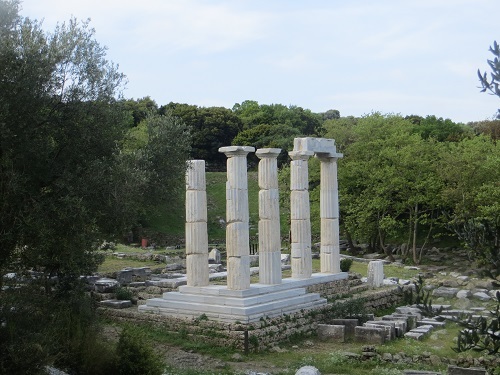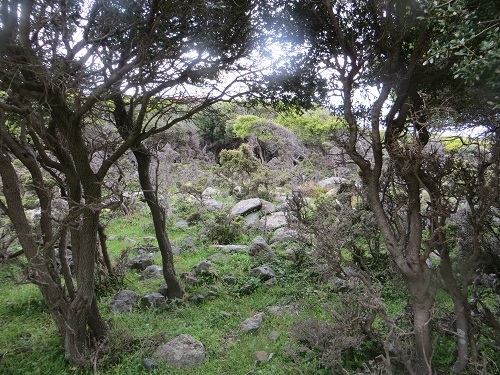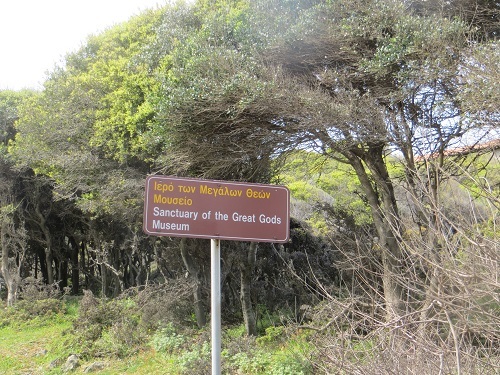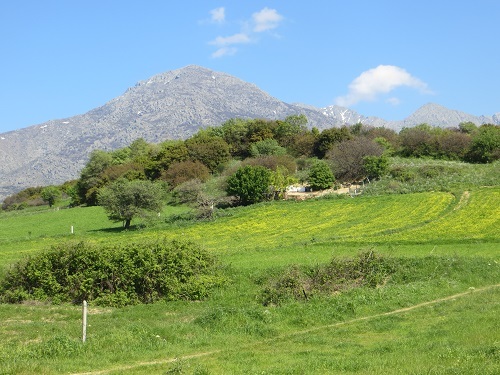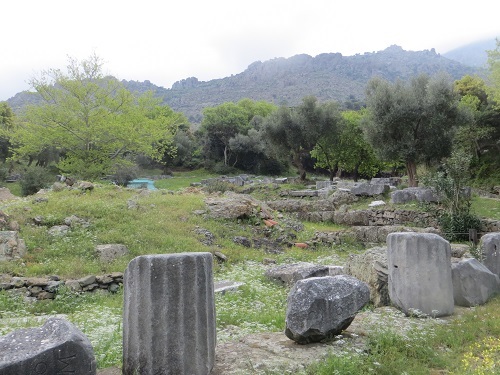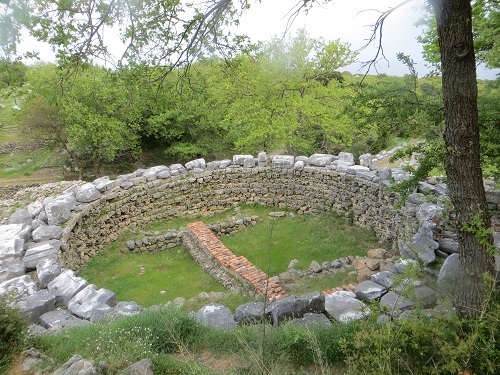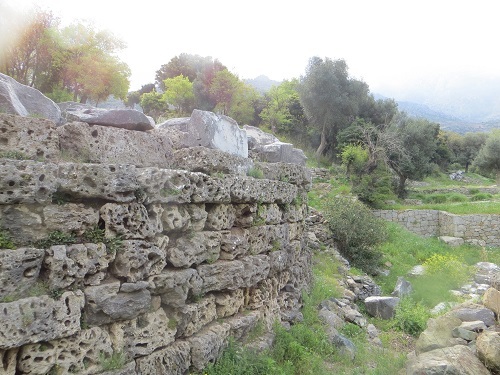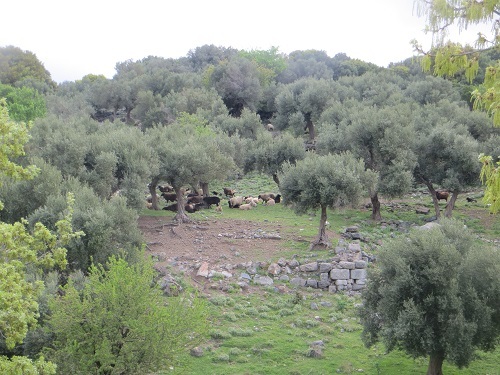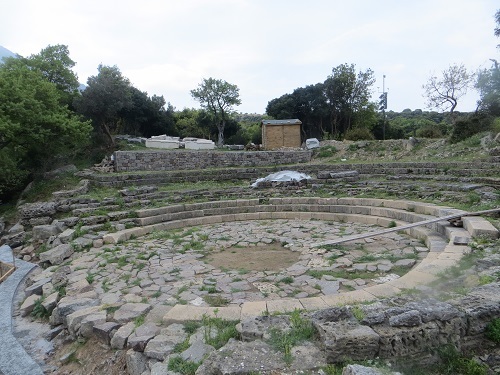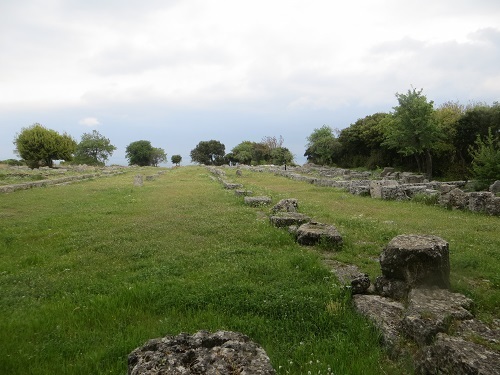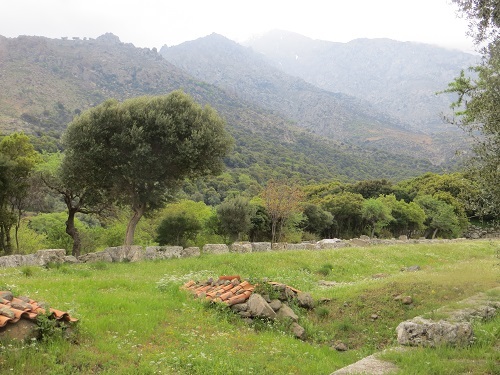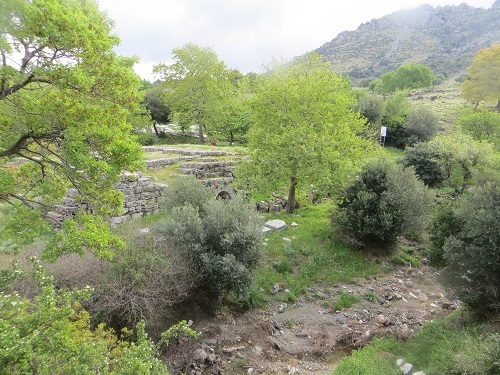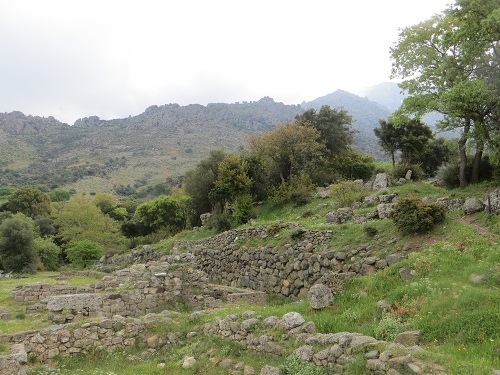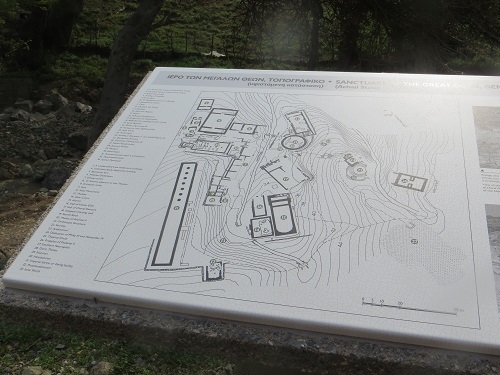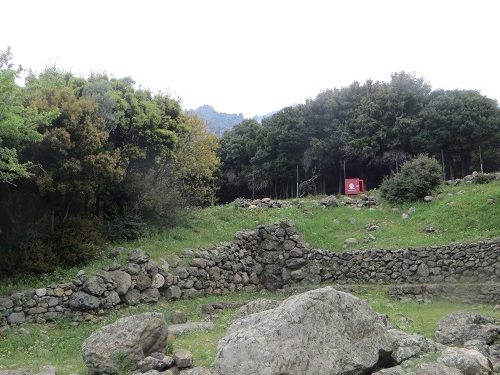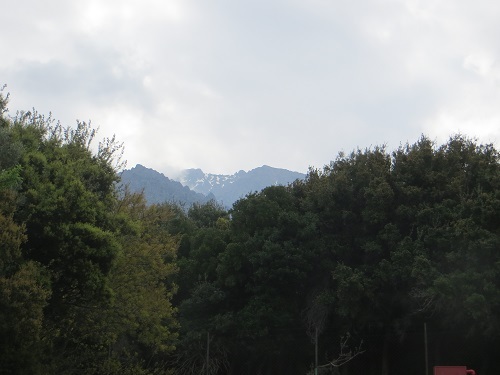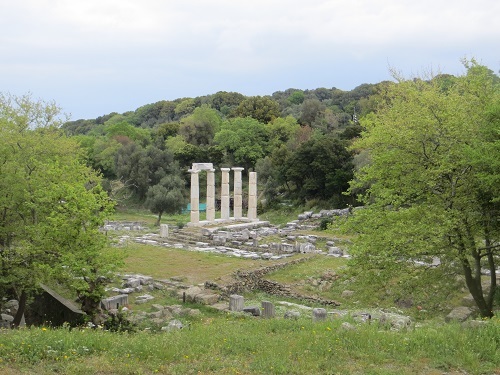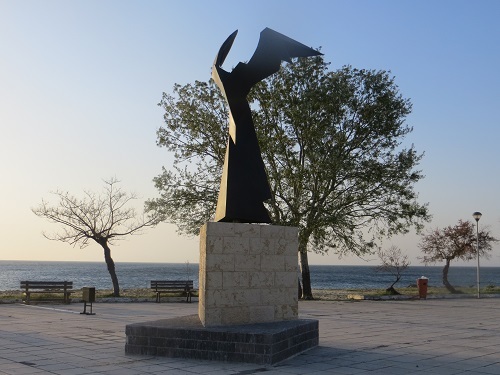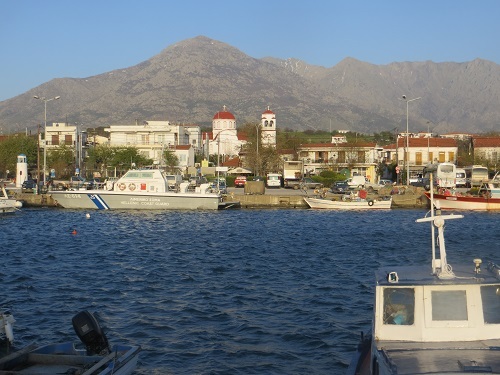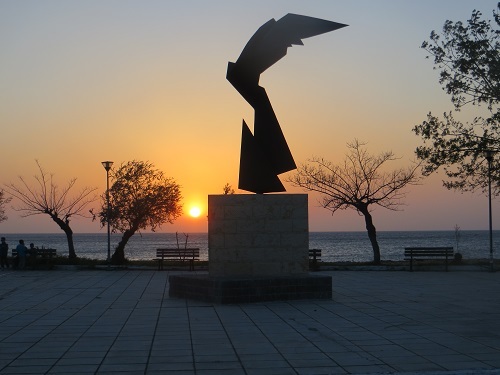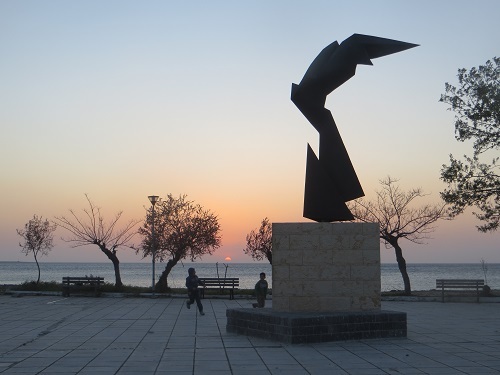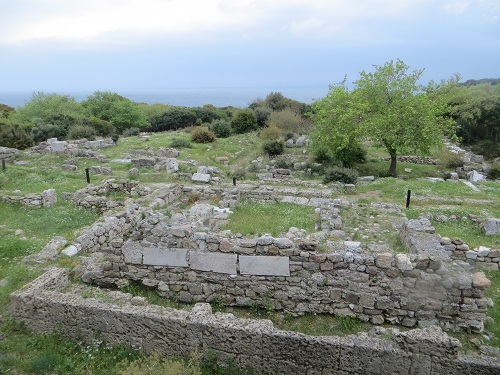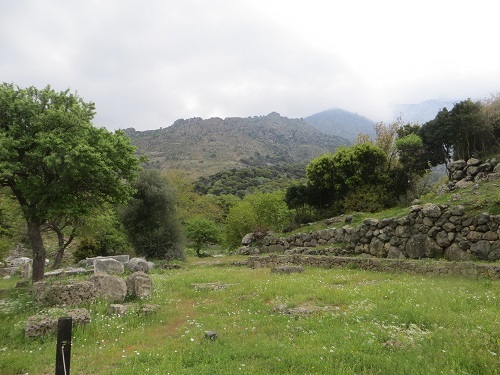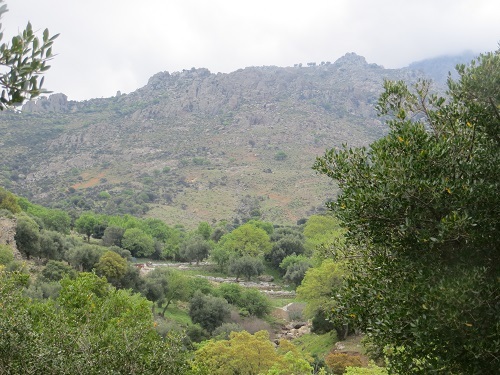Could it be that Alexander the Great became a glint in Dad's eye in that flowery bower over there amid the magnificent columns of the Sanctuary of the Great Gods, right here in the shadow of the craggy mountain peaks of Samothrace?
What we do know is that Dad, conquering hero Philip II of Macedon, wooed Mum - Olympias, daughter of King Neoptolemus I of Epirus - in this very spot when they both turned up as initiates into one of ancient Greece's most famed but mysterious cults.
Did lusty Dad have the ancient equivalent of a 'zipper problem' with his Macedonian tunic, get overheated and go into overdrive just over there by that crag, with Olympias conceiving the Great in this sacred place?
Well, it's not inconceivable that here the seed was sown, given all the other versions and time frames you come across in the ancient sources.
The not-yet-Great, a mere mini bundle of joy at the time, was born in July 356 B.C., back in Macedon's royal capital of Pella, and the magnificent temples, theatres and other dependencies that made the Sanctuary of the Great Gods great are no longer standing.
Their columns and walls now lie scattered over a large hilly area beneath the snow-streaked folds, ribs, ridges, pinnacles and saw-teeth of Mr. Fengari, highest peak in the Aegean at 5,285 feet, from whose summit Homer has Poseidon, god of the sea, observing the Trojan War.
What one can do in ruins such as these is let loose the dogs of lore as expounded by the ancient sources, unleashing one's imagination to run amok and conjure up the famous ghosts of the past who dallied here, as faithfully recorded by Herodotus, himself an initiate, Plato, Plutarch, Strabo, Aristophanes and other historians and fabulists of antiquity.
Is that fallen column over there where Orpheus, mythical father of song and first initiate, played his lyre in prehistory? Is that the shrine over there where Spartan admiral Lysander tarried at his initiation before he went on to defeat the Athenians in the Peloponnesian War? Is that the alley where Julius Caesar's dad-in-law, Lucius Calpurnius Piso Caesoninus, rested on his way to his initiation?
Whether in fact the Great was conceived here, Macedonia's kings certainly endowed the sanctuary with their beneficence as noted in dedicatory inscriptions in the names of the Great's son, Alexander IV, and the Great's half-brother, Philip III.
The site's history goes back three millennia when pre-Greek Thracians first built a shrine to their great gods on this hilly shore and engaged in mysterious rites and initiations.
In the 8th century B.C. Greeks settlers from the island of Samos came along to settle - hence its name Samothrace or Samos of Thrace - and by about 500 B.C. the Greeks, who never met a god or goddess they didn't like or want to syncretise with their already existing pantheon, fully adopted the sanctuary, its rites and its annual festival.
For the next 1,000 years it flourished as one of the most famous Hellenic religious sites and pilgrimage centres of the ancient world until the Christian emperors in Constantinople banned all pagan rites.
Today in the sixth year of the second decade of the 3rd Millennium A.D., Yours Truly is toddling along, not for any initiation into the ancient mysteries - since these have not resumed and nobody knows what they were as revelation by an initiate brought a sentence of death - but for a little look-see at how the mighty are fallen.
The setting beneath the verdant hillsides and more distant snow-streaked peak of Mr. Fengari is spectacular. The ruins are mostly calve-high walls - stoas, theatres, temples and the like. In the Hieron, the main holy of holies, five columns have been resurrected from their prostrate position and form a stunning image.
I'm totally alone, yet one more benefit of off-season travel - it's late April. It must be terrible with the pullulating ant-hills of humanity during the summer peak.
The paths are clearly marked but all the signs are missing from their stands, presumably being restored.
But I'm having ever so slight a problem in finding what is surely the sanctuary's most famous product - the iconic statue of the Winged Victory of Samothrace, possibly erected by Macedonian general Demetrius I Poliorcetes to celebrate his naval victory over King Ptolemy II of Egypt round about 290 B.C.
OK, I know the original is in the Louvre in Paris, where French Consul Charles Champoiseau sent it in 1863 after discovering it here minus head, arms and one of its wing, now replaced by plaster. But I think I read somewhere that a replica has been erected where the original once stood, and I can't find it. I leave no stone unturned, so to speak.
I return right back beyond the entrance to where there's a plan of the whole site. The Winged Victory's home is at point 12, behind the stoa. Back past the Hall of Choral Dancers I at last find a large stone-wall inset in the hillside that is clearly point 12.
There's no statue replica. A later look at Lonely Planet shows it's in the site's museum. I really must learn to read to the end.
There is now a red fire-hose box above where it stood, and beyond that the snow-streaked peak of Fengari framed by trees. Way back when she was on her pedestal and still had a head and face and eyes, as well as arms and her right wing intact, Madam would have had a splendid view over the Hieron and the white columns below.
The museum is closed, undergoing major reconstruction, thus depriving me of any Deep Throat to give me greater insight into the sanctuary, and my idea of a nice cup of tea in a nice little museum café has gone the way of the Winged Victory of Samothrace's head and arms.
Back in Kamariotissa, Samothrace's capital, the sun is almost in the sea now. On a tree-fronted square by the water a modernist cubist metal version of the Winged Victory is looking very distressed without her head or arms, her wings raised in horror like a Dementor out of Harry Potter.
A long curving breakwater affords superb views back to town, the Byzantine-style church, and the craggy bulk of Fengari.
The sun has almost drowned itself in the wine-dark sea, and three young boys are playing soccer and hide-and-seek round the Winged Victory. She's looking none too pleased at the shouting and laughing lack of decorum going on around her cubist feet - in so far as you can look without a head.
In fact she's looking even more distressed than before.
______________
By the same author: Bussing The Amazon: On The Road With The Accidental Journalist, available with free excerpts on Kindle and in print version on Amazon.
Swimming With Fidel: The Toils Of An Accidental Journalist, available on Kindle, with free excerpts here, and in print version on Amazon in the U.S here.

